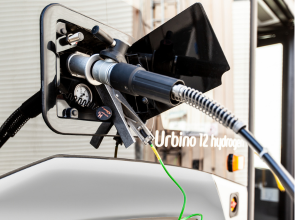BMDV supports the development of a charging and hydrogen filling station network

Federal Minister Dr. Volker Wissing presented the “Progress report on the overall concept of climate-friendly commercial vehicles” in Berlin today.
Data from the vehicle manufacturers shows for the first time that the forecast sales figures for heavy commercial vehicles with battery and fuel cells will increase very sharply in the coming years. According to this, by 2030 three quarters of newly registered commercial vehicles in the weight class from 12 tons should be emission-free. Against this background, an initial charging and hydrogen filling station network for zero-emission logistics is to be set up, said Federal Minister Dr. Wissing at the BMDV‘s “Conference on climate-friendly commercial vehicles”.
Dr Volker Wissing, Federal Minister for Digital Affairs and Transport, said, “The market ramp-up for zero-emission heavy commercial vehicles has begun and will develop very dynamically. Logisticians and freight forwarders are very interested in alternative drive systems. Manufacturers expect sales of trucks with battery or fuel cell drives to increase sharply in the coming years.
We therefore want and must decisively advance the infrastructure for climate-friendly commercial vehicles. Our charging infrastructure master plan therefore provides for the tendering of a charging network especially for trucks , which should start in the coming year. In addition, we support the development of a basic network of publicly accessible hydrogen filling stations for commercial vehicles.”
The charging infrastructure master plan II envisages setting up a public charging network for e – trucks on motorways. The charging infrastructure should be available as needed and fit into the existing logistics processes. Private investments must be mobilized to set up and operate charging stations.
This requires long-term viable business models. Already in 2023 the BMDVpublish a first call for tenders for the construction of an initial charging network, from which the further network will be built. In addition, the construction of a basic network of filling stations for hydrogen vehicles is to be started so that the infrastructure is prepared when, according to the forecasts of the manufacturers, fuel cell trucks come onto the market in the second half of the 2020s.
